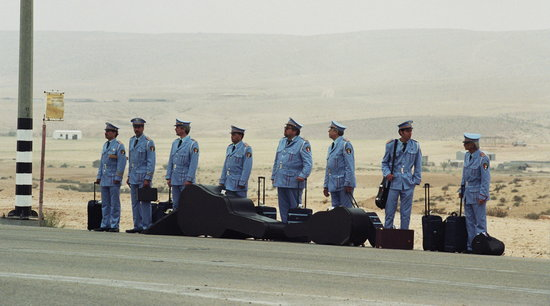A review in the New York Times Book Review and one by James Wood in the New Yorker, both brimming with superlatives, propelled me toward Joseph O’Neill’s Netherland earlier this spring. The book immediately became the foremost pleasure of the two weeks during which I read it. In the mornings and afternoons, I walked to my train with added briskness; on even short ventures from the apartment, I jammed the book into my too-small purse. I enjoyed it a lot.
I did not so much enjoy the blurb it received from Jonathan Safran Foer:
“New York is not what most people imagine it to be. Just as marriage, family, friendship, and manhood are not. Netherland is suspenseful, artful, psychologically pitch perfect, and a wonderful read. But more than any of that, it’s revelatory. Joseph O’Neill has managed to paint the most famous city in the world, and the most familiar concept in the world (love), in an entirely new way.”
Blurbing a book really brings out the worst in some people. Why not let the last sentence stand? Or, if that seemed too skimpy (I would call it concise), begin with the third? The smug first two sentences don’t do the book any favors. Buy this book, dear reader, and have your gross misconceptions about New York and life in general corrected! Fun.
The book can carry its own water, anyway. Written with exacting precision in the staid, somber voice of a Dutch-born London banker working in Manhattan after 9/11, it tells how he is assimilated into immigrant life in America via the cricket fields tucked away in many a corner of New York and environs. With his half-estranged wife back in London with their son, he becomes fascinated with a mysterious acquaintance from cricket, Chuck Ramkissoon, playing Nick to Ramkissoon’s Gatsby.
The book holds you at a bit of a distance. I didn’t warm up to it or its characters, but I clamored for more and more of its delicately structured sentences and paragraphs. They seemed decadent and nourishing at the same time, and they did as much as anything else in the book to delineate the main character. Here he is remembering his uneasiness during his last visit to his mother’s home, a month before her unforeseen death:
I stood at the window, waiting for the next arrival of light. The lighthouse had been mesmeric to my boy self. He was an only child and it must be that at night he habitually stood at his bedroom window alone; but my recollection of watching the light travel out of Scheveningen contained the figure of my mother at my side, helping me to look out into the dark. She answered my questions. The sea was the North Sea. It was filled with shops queuing for entry to Rotterdam. Rotterdam was the biggest port in the world. The breakwaters were perpendicular to the beach and stopped the beach from being washed away. The jellyfish in the water might sting you. The blue of the jellyfish was the color indigo. Seven particular stars made the outline of a plow. When you died, you went to sleep.
And:
Some people have no difficulty in identifying with their younger incarnations: Rachel, for example, will refer to episodes from her childhood or college days as if they’d happened to her that very morning. I, however, seem given to self-estrangement. I find it hard to muster oneness with those fomer selves whose accidents and endeavors have shaped who I am now. The schoolboy at the Gymnasium Haganum; the Leiden student; the clueless trainee executive at Shell; the analyst in London; even the thirty-year-old who flew to New York with his excited young wife: my natural sense is that all are faded, by the by, discontinued.
Gatsby is the obvious precursor for Netherland, but there’s something of Henry James’s Lambert Strether in Hans, too. His choice is different and many of the circumstances reversed in a resolutely post-Victorian world, but the novel does have a few moral disillusionments in store for him on a similar scale. But then again, I may be stretching the case–this may just be one of those books that has a way of evoking all the major landmarks in one’s reading history.

 Eight Egyptian policemen, who comprise the Alexandria Police Ceremonial Orchestra, travel to Israel to perform at the opening of an Israeli-Arab cultural center. The opening scenes find them negotiating with difficulty but with dignity the challenges of a foreign airport, identically dressed in stately powder-blue uniforms. In the movie’s signature image, they stand in a row in an empty landscape, waiting. Each carries a standard black suitcase and his instrument, from a large, curvy double bass case to a small, boxy clarinet case with many sizes and shapes in between. The dry comedy of this image–a little reminiscent, to me, of a William Booth cartoon–characterizes a good deal of the movie, in which the band gets lost on the way to their concert in a sort of fortuitous, or at least adventurous, detour.
Eight Egyptian policemen, who comprise the Alexandria Police Ceremonial Orchestra, travel to Israel to perform at the opening of an Israeli-Arab cultural center. The opening scenes find them negotiating with difficulty but with dignity the challenges of a foreign airport, identically dressed in stately powder-blue uniforms. In the movie’s signature image, they stand in a row in an empty landscape, waiting. Each carries a standard black suitcase and his instrument, from a large, curvy double bass case to a small, boxy clarinet case with many sizes and shapes in between. The dry comedy of this image–a little reminiscent, to me, of a William Booth cartoon–characterizes a good deal of the movie, in which the band gets lost on the way to their concert in a sort of fortuitous, or at least adventurous, detour.